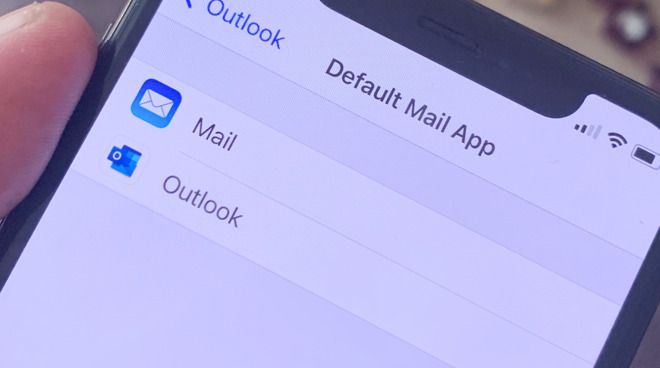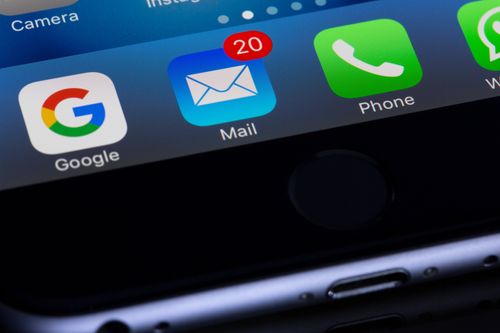Email communication has become an integral part of our daily lives, and managing bounced messages is a crucial aspect of maintaining effective email communication. If you use an iPhone for your email needs, it's essential to understand how to handle bounce email efficiently. In this comprehensive guide, we will explore the ins and outs of bounce email on iPhone, providing you with the knowledge and strategies to manage bounce messages effectively and optimize your email experience on your mobile device.
Understanding Bounce Email

Bounce email refers to messages that are returned to the sender due to delivery failures. When you encounter a bounce message, it means that your email was not successfully delivered to the recipient's inbox. Bounce email can occur for various reasons, such as invalid email addresses, full mailboxes, or issues with the recipient's mail server.
On an iPhone, bounce email notifications can appear as error messages or notifications indicating delivery failure. Understanding the different types of bounce messages and their meanings is crucial for troubleshooting and improving email deliverability.
Managing Bounce Email on iPhone

Here are some strategies to help you manage bounce email on your iPhone:
1. Analyze Bounce Notifications
When you receive a bounce notification, carefully read and analyze the error message. It may provide valuable information about the reason for the bounce, such as an invalid email address, mailbox full, or server issues. Understanding the specific error will guide your troubleshooting process.
2. Verify Recipient's Email Address
Double-check the email address of the recipient to ensure accuracy. Typos or incorrect email addresses can lead to delivery failures and bounce notifications. Pay attention to spelling, domain names, and any special characters in the email address.
3. Update Contact Information
If you frequently encounter bounce email notifications for a specific contact, consider updating their contact information. Confirm their email address, check for alternative email addresses, or reach out to them directly to verify their contact details. Keeping contact information up to date minimizes the chances of encountering delivery failures.
4. Check Mailbox Capacity
If the bounce notification indicates a full mailbox, advise the recipient to clear their mailbox or make room for new messages. A full mailbox prevents the delivery of new emails and can result in persistent bounce notifications.
5. Configure Email Settings
Optimize your email settings on your iPhone to improve deliverability and reduce bounce email. Ensure that your outgoing mail server settings are correct, including the correct server address, port number, and authentication details. Consider enabling SSL or TLS encryption for secure communication.
6. Avoid Sending Unsolicited Emails
Sending unsolicited emails, commonly known as spam, can result in bounce email and damage your email reputation. Respect email etiquette and only send emails to recipients who have given explicit consent to receive communication from you. This helps maintain a healthy email communication ecosystem and minimizes the chances of encountering bounce email.
Frequently Asked Questions
Q1: Why do I receive bounce email notifications even when I enter a valid email address?
Bounce email notifications can occur for various reasons, even if you enter a valid email address. It could be due to temporary issues with the recipient's mail server, a full mailbox on the recipient's end, or technical glitches during email transmission. Analyze the specific bounce notification to identify the cause and take appropriate action.
Q2: Can bounce email affect my email deliverability?
Yes, consistent bounce email can have a negative impact on your email deliverability. Email providers and mail servers may interpret frequent bounces as a sign of poor email quality or spamming activities. It's important to actively manage bounce email and address any underlying issues to maintain a healthy email deliverability rate.
Q3: How can I prevent bounce email on my iPhone?
To prevent bounce email on your iPhone, ensure that you enter accurate recipient email addresses, maintain up-to-date contact information, optimize your email settings, and follow email best practices. By implementing these strategies, you can minimize the chances of encountering bounce email and improve your overall email communication experience.
Q4: Should I contact the sender if I receive a bounce email notification?
If you receive a bounce email notification for a message you were not expecting or from an unknown sender, exercise caution. Bounce email notifications can be manipulated by spammers. It's best to verify the sender's legitimacy through alternate means, such as contacting them directly via phone or a trusted communication channel.
Conclusion
Mastering bounce email on your iPhone is crucial for maintaining effective email communication. By understanding the causes and types of bounce email, implementing appropriate strategies, and optimizing your email settings, you can minimize bounce notifications, improve email deliverability, and ensure a seamless email experience on your iPhone. Take control of your email communication today and unlock the full potential of your iPhone as a powerful tool for staying connected.



